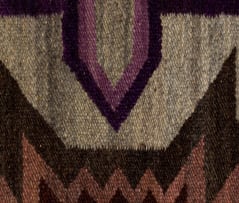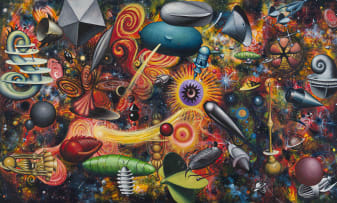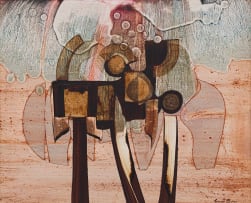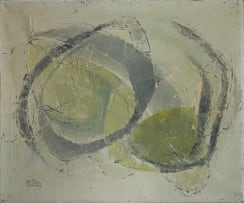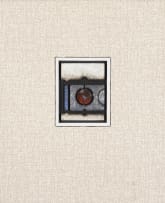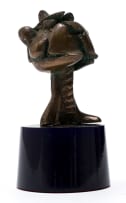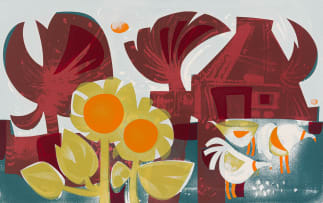View/Re/View
Timed Online Auction, 11 December - 15 January 2024
Impression/Expression
Incl. Buyer's Premium & VAT
About this Item
inscribed with the designer's name, Thulisile Nxumalo, numbered 55 and dated 2003 on a Rorke's Drift ELC Art and Craft Centre label sewn to the reverse
Notes
The Evangelical Lutheran Church Art and Craft Centre at Rorke's Drift was established as a poverty alleviation initiative in the early 1960s at a small Swedish mission station in KwaZulu-Natal, South Africa. Two Swedish art school graduates, Peder and Ulla Gowenius, began a weaving experiment in early 1962 at Ceza Mission Hospital before moving the venture to what was to be its permanent home at Rorke's Drift in mid-1963. The Goweniuses started a weaving production studio whose sales of tapestries would also support the Centre's subsequent ventures, including fine art, ceramics and textile printing, as well as domestic science and book-keeping. The weaving venture introduced hundreds of women (and a few men) to tapestry technology, at a time when few, if any, possibilities existed for rural black women to earn a living in the creative industries. From 1962 figurative and nonfigurative tapestries were shown on a series of exhibitions in Sweden. Although few South Africans were aware of this achievement, tapestries made by women at Rorke's Drift were acquired from the early 1960s by Swedish institutions, such as Konstfack and the National Museum. A few years later, the Centre's output started becoming more visible locally, with exhibitions at Gallery 101 in Johannesburg in 1966, IZIKO South African National Gallery in Cape Town in 1967, and Durban Art Gallery (DAG) in 1968, among others. Tapestries from Rorke's Drift also showed in the United States, Canada, Denmark, Greece and elsewhere. During the period of Swedish stewardship at the Centre, these works represented South Africa on the Venice Biennale in 1970 and the São Paulo Bienal in 1973, and received gold medals in 1968 and 1974 at the International Art and Craft exhibition in Florence. To date, most South African writings have focused on the Centre's printmaking, a later venture introduced as part of the Fine Art course to offer opportunities chiefly to men, who mostly came from urban townships. Scholarly attention has yet to be accorded to the rural women and men who wove over a thousand tapestries under the direction of the Swedes and later their Dutch, American and South African successors. The narrative of tapestry at the Centre's weaver reflects particular social, political, doctrinal and economic contexts and ideological struggles and the ways in which individuals negotiated these. In particular, this community of socially and economically disempowered women, on a remote mission field, secured a livelihood and asserted their individual 'voices' at the loom, and they have continued to do so since the advent of democracy in South Africa.
Adapted from: Philippa Anne Hobbs (2019) Ideology, Imagery and Female Agency in Tapestry at the Evangelical Lutheran Church Art and Craft Centre, Rorke's Drift, During the Swedish Period 1961-1976, unpublished PhD thesis, University of Johannesburg.




